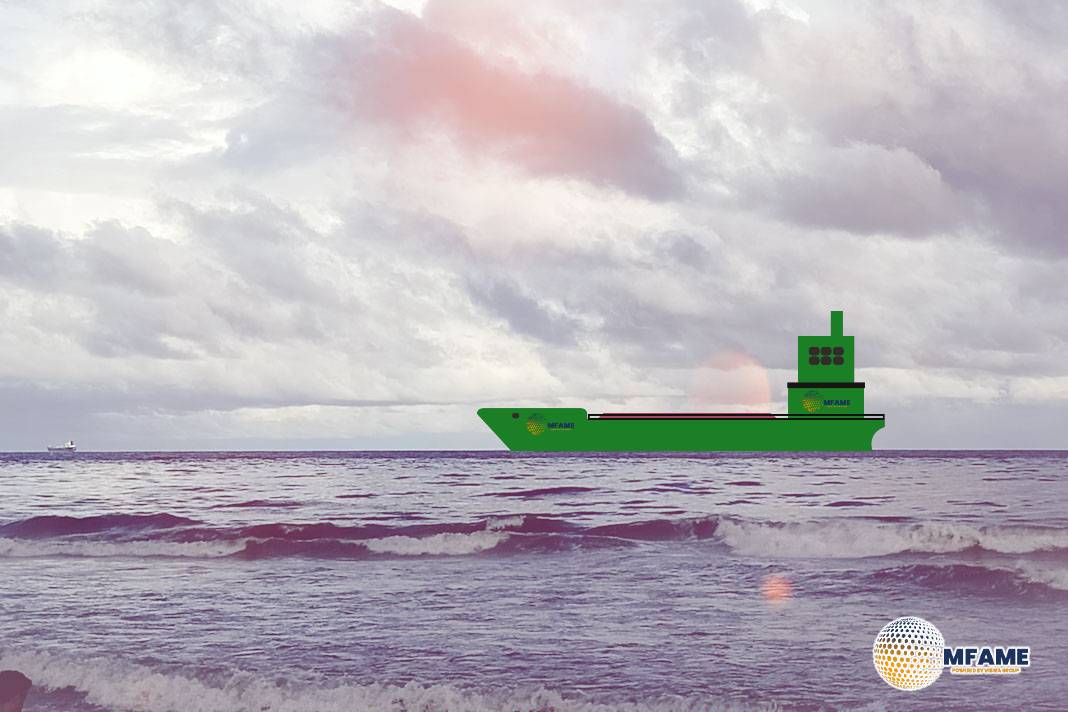Liquefied Natural Gas (LNG) is increasingly vital in the global energy landscape, serving a dual purpose: enhancing energy security and significantly contributing to emissions reduction programs.
Significant Advancement
US-listed Capital Clean Energy Carriers is pioneering a significant advancement in carbon shipping technology with its order of four ammonia-ready LCO₂ low-pressure (LP) carriers. These 22,000 cubic meter (cbm) vessels, being built at HD Korea Shipbuilding & Offshore Engineering’s (HD KSOE) HD Hyundai Mipo and classed by LR (Lloyd’s Register), represent a crucial step forward for the nascent CO₂ maritime supply chain.
The first of these four groundbreaking vessels was floated out in April 2025. This event marks a “significant breakthrough” because the low-pressure design, a first of its kind for LCO₂ carriers of this size, offers enhanced cargo capacity, improved cost-efficiency, and greater operational reliability. This is a critical development, as carbon avoidance strategies are typically associated with increased costs. By demonstrating a cost-effective solution for CO₂ transport, these vessels present a compelling value proposition.
According to Pano Mitrou, LR’s Global Gas Segment Director, these carriers also represent a broader breakthrough for the LCO₂ supply chain. He emphasizes that all projections indicate carbon capture as an important component in achieving net-zero emissions by 2050. To meet the anticipated demand in CO₂ trade, the maritime supply chain for this cargo will need to evolve from simple “A to B” point-to-point transfers to a more “live and flexible” trading system. This flexibility, he asserts, will enable a “globally unified, standardised and healthy LCO₂ trade within shipping” that can adapt to market requirements and scale effectively.
The development of low-pressure (LP) LCO₂ carriers by HD KSOE’s HD Hyundai Mipo marks a significant evolution in carbon shipping, offering distinct advantages over the limited number of medium-pressure (MP) systems currently in operation.
Challenges with Medium-Pressure Systems
As explained by Dongjin Lee, Executive Vice President at HD Hyundai Mipo, existing MP systems for LCO₂ transport operate at higher pressures (19 bar) and warmer temperatures (-35°C). While technically sound, these systems face limitations in spatial efficiency and incur higher costs due to the specialized materials required, particularly when considering the large-scale transport needs of the burgeoning Carbon Capture and Storage (CCS) industry.
Advantages of Low-Pressure Design: In contrast, HD Hyundai Mipo’s LP LCO₂ cargo tanks are engineered to operate at approximately 8 bar and a colder temperature of -55°C. This lower pressure regime enables several key benefits:
- Enhanced Cargo Capacity: The LP design allows for a special tank configuration known as a bi-lobe design. This innovative structure overlaps two cylindrical tanks into a single integrated unit, significantly improving cargo intake efficiency and maximizing the volume of CO₂ that can be transported. This bi-lobe configuration would be structurally challenging and potentially unsafe in a medium-pressure vessel due to higher stress concentrations, but it becomes feasible and safe under LP conditions.
- Cost-Efficiency and Operational Reliability: By operating at lower pressures and optimizing tank design, the LP vessels offer improved cost-efficiency and enhanced operational reliability, addressing critical needs for the large-scale deployment of CO₂ transport.
Market Drivers
As industries globally intensify their efforts to reduce carbon emissions, the demand for liquefied CO₂ (LCO₂) carriers is projected to grow significantly. This emerging sector is seen as a crucial component in achieving net-zero emissions by 2050.
Current Landscape and Future Projections: While the LCO₂ transport sector is relatively small today, it is poised for substantial development. Currently, there are seven LCO₂ carriers in operation, with seven more on order. Notably, this order book includes four 22,000 cbm low-pressure (LP) multi-gas carriers being built to LR class for Capital Clean Energy Carriers, with the first floated out in April 2025.
The Need for Flexible Trading Patterns: Pano Mitrou, LR’s Global Gas Segment Director, emphasizes the importance of newbuild projects fostering flexible trades in volume. He notes that as the only carbon-negating chain, the industry must transition from traditional “project-based shipping patterns” to more “flexible trading patterns.” This requires a fundamental rethinking of the shipping supply chain as an adaptable and integrated part of the overall carbon supply chain.
Mitrou highlights that a 22,000 cbm LP LCO₂ carrier could become the “work-horse of the maritime LCO₂ supply chain.” He views it as a promising investment due to its lower capital and operational expenditures and its ability to access a broader range of terminals. These multi-gas capabilities (able to carry LPG and ammonia in addition to LCO2) also enhance their commercial viability, allowing operators to switch between cargoes based on market demand.
Did you subscribe to our daily Newsletter?
It’s Free Click here to Subscribe!
Source: Lloyd’s Register
















